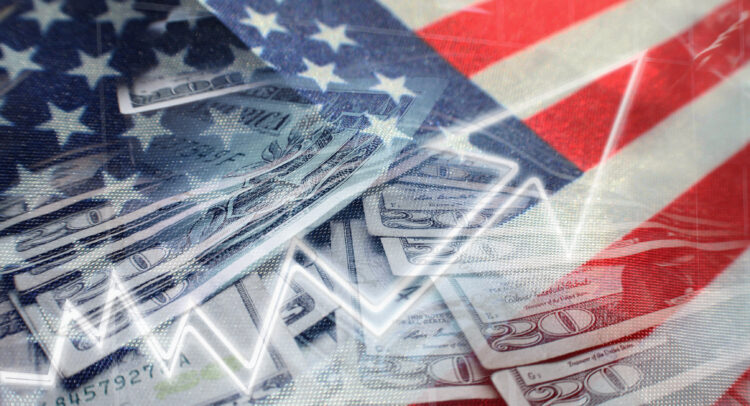The U.S. economy demonstrated its resilience in Q2 2024, posting a growth rate of 2.8%, effectively doubling its growth rate from the first quarter and smashing the market’s expectations of 2.1%. This unexpected showing was fueled by strong consumer spending and business investment despite the backdrop of more challenging job numbers. In addition to the stronger-than-expected GDP growth, the Personal Consumption Expenditures (PCE) data showed that inflation is not decelerating as quickly as forecasters had predicted. This piece of the puzzle further complicates the outlook for the Fed’s monetary policy.
Elevate Your Investing Strategy:
- Take advantage of TipRanks Premium at 50% off! Unlock powerful investing tools, advanced data, and expert analyst insights to help you invest with confidence.
The PCE index is the Fed’s preferred inflation gauge, and it suggests that inflationary pressures are more persistent than forecast. This increases the likelihood that the central bank may maintain rates where they are since the Federal Reserve has been cautious in its approach to monetary policy, emphasizing the need for more concrete evidence that inflation is sustainably moving towards its 2% target. Nevertheless, the next move is still expected to be down.
The Fed’s Dilemma
The recent economic data has put the Federal Reserve in a challenging position. Indeed, the acceleration in economic growth diminishes market hopes for rate cuts, as it could lead to higher inflationary pressures. In addition, the Fed remains cautious about prematurely cutting rates, preferring to gather more data before making a decision.
The next potential window for rate cuts is the July 30-31 meeting. While some Fed watchers, like former New York Federal Reserve President William Dudley, recently said that they should move in July, far more economists have been banking on the September 17-18 meeting for a cut. September is a month and a half away, and many additional economic developments may lead the Fed to wait in order to collect more data and observe the trends.
Why the Fed May Wait
An acceleration in the economy generally lowers market hopes for rate cuts, as stronger economic growth can lead to higher inflationary pressures, prompting central banks to maintain or even increase interest rates to keep inflation in check. If and when the policy does change to a more accommodative stance, the Fed is not likely to take any chances on easing into a strengthening economy. It is more likely to use stronger GDP numbers as a sign the economy is going well enough that the Fed can wait until inflation falls further.
Key Takeaways
The U.S. economy’s resilience, as evidenced by stronger-than-expected GDP growth, has complicated the Federal Reserve’s decision-making process regarding rate cuts. Despite market anticipation of easing monetary policy later in the year, the recent acceleration in economic growth could lead the Fed to delay such actions. The central bank faces the challenge of balancing the need to control inflation with supporting economic activity, and its cautious approach is likely to persist in the coming months.
















